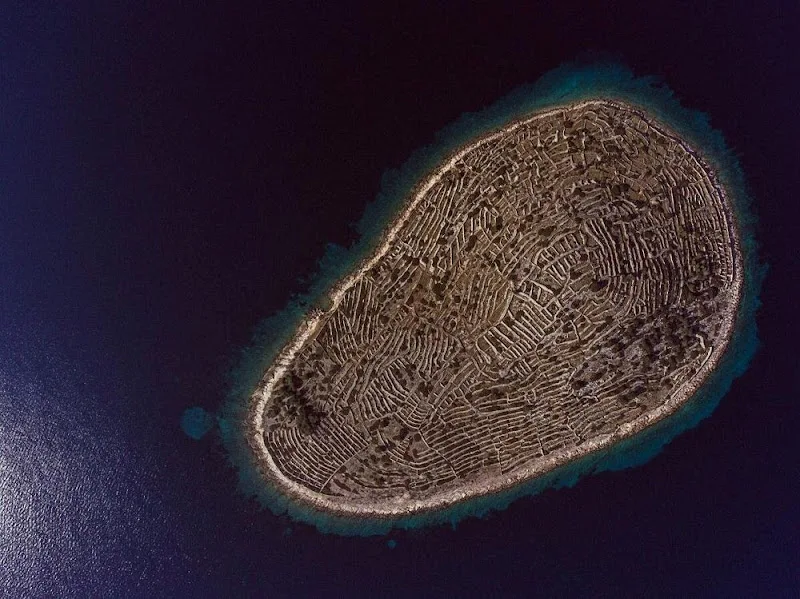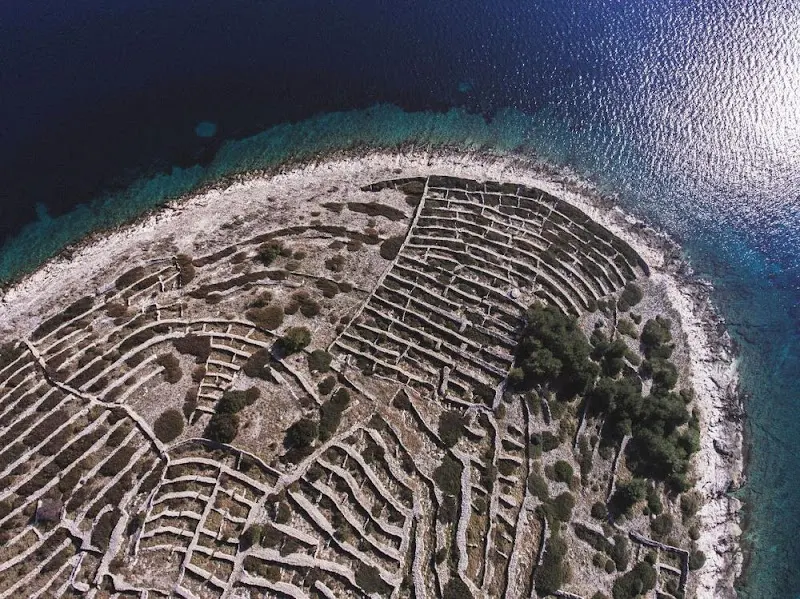Bavljenac (Otočić Bavljenac) a small island in the Adriatic Sea off the coast of Croatia, has been the subject of much attention in recent times. Located in the Šibenik archipelago, on the Dalmatian coast, this small island of 1.4 square kilometers is completely covered by a network of dry stone walls.
 |
| Bavljenac Island |
Of the 1,244 islands and islets that Croatia has, only 66 are inhabited, but many of them are steeped in history. The case of Bavljenac, the island of stone walls, is an example of this. The story goes that in the 16th and 17th centuries, during the Ottoman conquest, the island served as a refuge for Christians who began to build, stone by stone, a network of walls to protect themselves, although it would not be until the 19th century and thanks to the agriculture, when it reaches its current appearance that resembles a human fingerprint.
When viewed from the air, the island, oval in shape, looks like a giant fingerprint with long rows of low walls that resemble furrows in the skin.
 |
| Bavljenac Island |
Like many Western European countries such as Ireland, England and Scotland, much of rural Croatia is littered with dry stone walls. These walls were historically used to mark the boundaries between adjacent agricultural lands. The walls are built without mortar. Instead, the builders carefully selected the stones and stacked them tightly against each other like pieces of a puzzle.
 |
| Bavljenac Island |
Much of the Croatian coastline is characterized by karst topography, in other words rocky. To farm in rocky terrain within each other's boundaries, farmers carefully collected rocks from the ground and then used them to build walls around geometric patches, creating, in some cases, a network that stretched for miles.
On Bavljenac, an island only half a kilometer long, the walls stretch for a total of 23 kilometers.
 |
| Bavljenac Island |
Recently, the Croatian government has been lobbying UNESCO to include the Bavljenac Island and its dry stone walls in its list of World Heritage sites.
Aside from defining the agricultural frontier, the walls also serve as shelter from the strong winds known as 'bura', making cultivation possible in exposed locations along the coast.
